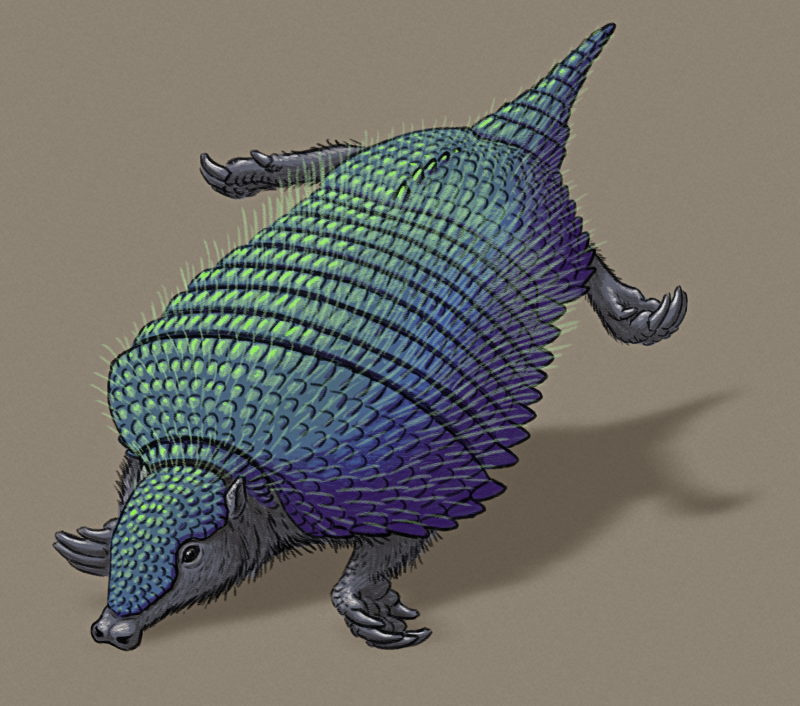Someone who identified themself only as “Hanna” requested a “mammal that’s shiny and iridescent like some insects and spiders”:

Lustrophractus hannae is a relative of modern hairy armadillos that has adapted for a semiaquatic lifestyle.
About 40cm long (~16″), its unusually shiny carapace originally evolved thanks to its ancestors’ burrowing habits. Much like golden moles and some snakes, these armadillos’ scutes and hairs developed microridges that reduced friction and repelled dirt particles, with the side effect of becoming strikingly iridescent – and, conveniently, also rather water repellent, enabling Lustrophractus’ lineage to take up aquatic omnivorous foraging habits.
The iridescence also serves a defensive function, using a bright flash of color to startle and confuse predators.
